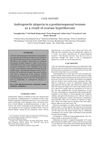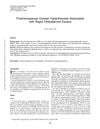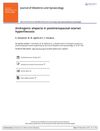 17 citations
,
February 2003 in “Australasian Journal of Dermatology”
17 citations
,
February 2003 in “Australasian Journal of Dermatology” Hair loss in postmenopausal woman caused by ovarian issue.
7 citations
,
January 2022 in “Case Reports in Endocrinology” Ovarian hyperthecosis can cause symptoms even with normal testosterone levels, and surgery can improve these symptoms.
 1 citations
,
September 2020 in “Endocrinology, Diabetes & Metabolism Case Reports”
1 citations
,
September 2020 in “Endocrinology, Diabetes & Metabolism Case Reports” The conclusion is that thorough investigation of hypertension and hormonal dysfunctions is important, and there may be a link between these conditions and cancer.
 1 citations
,
January 2018 in “Journal of Gynecologic Surgery”
1 citations
,
January 2018 in “Journal of Gynecologic Surgery” Removing both ovaries can treat increased testosterone and related symptoms in postmenopausal women with ovarian hyperthecosis.
 1 citations
,
May 2011 in “Journal of Obstetrics and Gynaecology”
1 citations
,
May 2011 in “Journal of Obstetrics and Gynaecology” Hair loss in postmenopausal women due to ovarian hyperthecosis is rare, but removing the ovaries can significantly improve the condition.




